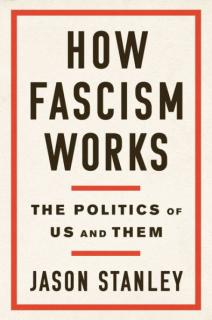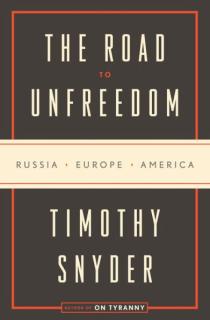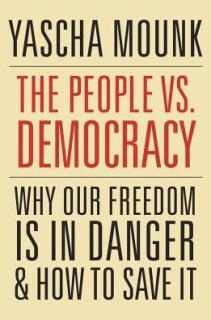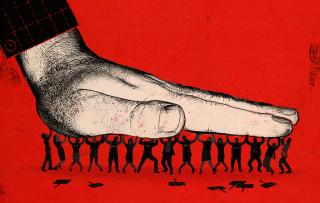Advertisement
At the end of World War II, fascism seemed not only beaten, but discredited. By the end of the Cold War, liberal democracy appeared to be so triumphant that political scientist and economist Francis Fukuyama famously proclaimed it the final form of government. Yet now, just a generation later, democracy is in retreat around the world, and political movements with fascistic tendencies are rising towards power in nations as diverse as Russia, Hungary, Turkey, Brazil, India, and even the United States.
Three recent books examine this phenomenon from very different angles, together creating an image of great depth.
One approach is to ask what exactly unites these different movements, and what we should call them. The word fascist is often thrown around, but it is hard to define or apply with consistency. The historical movements usually described as fascist have been so protean, and so dependent on local conditions, that the term may seem to have no real content. Used sloppily, fascist can be little more than an insult to throw at political rivals.

How Fascism Works,by Jason Stanley (Random House, 2018; $26)
In How Fascism Works (Random House, 2018), Jason Stanley addresses this philosophical conundrum by looking at fascism as a way of seeking power rather than as an ideology. What unifies fascists, he says, is not a worldview or a political program, but a set of tactics. Fascism, the book’s subtitle claims, is “the politics of Us and Them.”
The fascist “Us” is an identity group (perhaps racial, ethnic, religious, or some combination) that sees itself as the nation’s essential core, representing its original purity. (Hence phrases like “real Americans” or slogans like “England for the English.”) “Them,” on the other hand, encompasses all the outsiders who infest and corrupt the nation, seeking to take it away from its rightful owners.
In more detail, the fascist political message includes
- idealizing a mythic past when “we” were dominant;
- glorifying the patriarchal values of that mythic past;
- stoking and exaggerating “our” current grievances;
- scapegoating “them” as the cause of those grievances;
- demonizing and delegitimizing any institutions (like academia, the press, and the courts) that attempt to establish a basis for public discussion in objective truth;
- raising the “pure” countryside against the cosmopolitan (and therefore corrupted) cities;
- through propaganda and disinformation, creating a state of unreality in which nothing is believable, but some voices are simply louder than others.
Ultimately, the loudest voice is that of the fascist leader, who alone can speak for the nation’s “real” citizens. Through its identification with the leader’s authoritarian rule, the “Us” group “takes our country back” from the usurping “Them.”
Asecond way to examine the current threat to democracy is to tell its story, as Timothy Snyder does in The Road to Unfreedom (Tim Duggan Books, 2018). In his account, the twenty-first century’s anti-liberal wave began with Vladimir Putin’s corruption of democracy in Russia. Once in power, Putin provided a model (as well as substantive aid) for similar movements in other countries.

The Road to Unfreedom,by Timothy Snyder (Tim Duggan Books, 2018; $27)
Snyder is cautious about using the word fascism, perhaps to avoid the semantic difficulties Stanley grappled with. (However, he does describe Putin’s favorite political philosopher, Ivan Ilyin, as a fascist.) Instead, he invents his own term “the politics of eternity,” which “places one nation at the center of a cyclical story of victimhood. Time is no longer a line into the future, but a circle that endlessly returns the same threats from the past.”
“An eternity politician defines foes rather than formulating policies,” Snyder writes, and “produces crisis and spectacle” rather than solutions, focusing on “problems that are insoluble because they are fictional.” Eternity movements “first spread fake news themselves, then claim that all news is fake, and finally that only their spectacles are real.”
Though he doesn’t explicitly equate the politics of eternity with fascism, Snyder’s accounts of eternity politics in Russia, in the Brexit campaign, in the Trump campaign, and elsewhere could serve as worked examples of Stanley’s list of fascist tactics, from Putin’s distortions of Russian history and exploitation of traditional anti-gay bigotry, to the Russian/American collaboration that created and installed as president “the fictional character ‘Donald Trump, successful businessman.’”
Snyder pays particular attention to Russia’s invasion of Ukraine and how Putin’s messaging (which portrayed a Ukraine separate from Russia as simultaneously a dire threat and a myth) was designed not to convince or persuade the outside world, but to jam any meaningful discussion. “According to Russian propaganda, Ukrainian society was full of nationalists but not a nation; the Ukrainian state was repressive but did not exist; Russians were forced to speak Ukrainian though there was no such language.”
Athird perspective on the current crisis focuses on the vulnerable shore rather than the threatening wave: What has made so many democracies vulnerable to fascist tactics?
Snyder answers this question by coining another term, “the politics of inevitability,” which he defines as “a sense that the future is just more of the present, that the laws of progress are known, that there are no alternatives, and therefore nothing really to be done.” Any substantive change in public policy—like national health care, higher taxes on the rich, or pulling back from foreign wars—is inconceivable.
But the politics of inevitability can retain public loyalty only as long as its predictions of progress hold. When the public loses confidence in progress, as it did in Russia during the 1990s and throughout the West during the Great Recession, the politics of eternity can step into the breach.

The People vs. Democracy,by Yascha Mounk (Harvard Univ. Press, 2018; $29.95)
A more nuanced and detailed view of that vulnerability appears in The People vs. Democracy (Harvard University Press, 2018) by Yascha Mounk. Mounk sees liberal democracy as defined by two competing ideas: democracy allows the majority to rule, but liberalism constrains the ruling majority to respect due process and individual rights. In a healthy liberal democracy, those two horses pull in the same direction. The current ruling majority values individuality and transparent government, and dissatisfied individuals have hope of addressing their problems within the democratic system by forming a new majority coalition.
While there never was a golden age of perfect liberal democracy, in recent years the two horses have increasingly pulled against each other. As globalization makes economies more complex and populations more diverse, power gravitates away from democratic processes and towards expert institutions like the Federal Reserve, the World Trade Organization, and the Supreme Court. Such institutions may be better equipped to manage complex systems, but they also increase the distance between popular desires and government action. (Hence the “nothing really to be done” that Snyder noted.)
Taken to an extreme, such technocratic government devolves into undemocratic liberalism, where individual rights are respected, but the majority no longer rules. From there, the system is open to corruption, as regulating experts become tools of the powerful forces they are supposed to be regulating.
A natural reaction to undemocratic liberalism is illiberal democracy, where a majority simply wants what it wants and refuses to be bound by the rules, norms, and processes that protect minority rights. This undisciplined majority is open to manipulation by a leader using Stanley’s fascist tactics. If the surrendered rights include the right to seek a new majority through fair elections, nothing short of revolution can check the leader’s increasing authoritarianism.
Ultimately, then, neither undemocratic liberalism nor illiberal democracy is stable. Liberalism and democracy need each other if they are to survive for the long term.
Two other factors have contributed to liberal democracy’s recent instability: as the very wealthy have captured an ever-larger portion of the economy’s growth, many middle-class parents have lost faith that the current system can offer their children a better life. Consequently, they are more receptive to fascist tactics.
Simultaneously, the internet and social media have made it harder for an expert consensus to marginalize alternative points of view. On the plus side, this development allows minority communities to have a voice more proportionate to their numbers. But it also has opened the door to conspiracy theories and fake news and chipped away at the common basis of truth necessary for a productive democratic debate.
What can be done to survive the fascist wave and restore democracy? All three books point in a similar direction. Of course fascist tactics must be recognized for what they are and called out. The norms that uphold democracy (particularly respect for objective facts) must be defended. But in the long run it is also necessary to recognize and live by several truths: Liberal democracy is not the inevitable result of unstoppable processes, but instead is an achievement that can be undone. For better or worse, history is a story human beings create day by day; it is neither fixed in its current cycle nor destined to reach a predetermined goal. And even the most enlightened form of government must continue to earn the loyalty of its citizens, by addressing the problems they face today and offering them legitimate hope for their children’s future.
